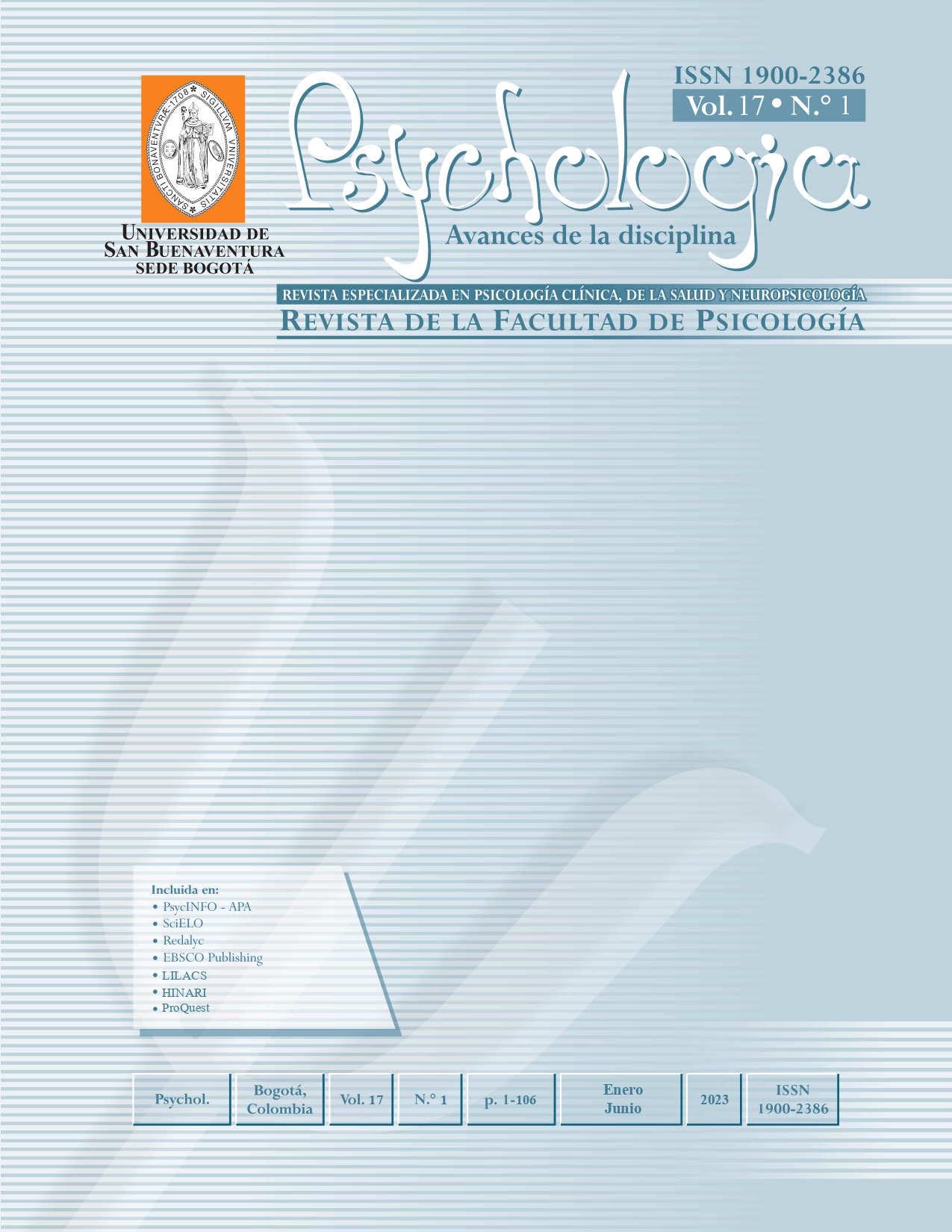This journal provides open, immediate access to its contents, based on the principle that offering the public free access to research helps to promote a higher global exchange of knowledge.
As such, all journal articles are published under a Creative Commons Attribution-NonCommercial-ShareAlike 4.0 International License (CC BY-NC-SA), by which commercial use of the original work or its possible derived works is not allowed, and the distribution thereof must be done with the same license elements regulating the original work.
http://creativecommons.org/licenses/by-nc-sa/4.0/
Abstract
Previous studies have found emotional behavioural problems among school children in Pakistan and their impact on academic achievement (Javed et al., 1992; Samad et al., 2005; Soomro & Clarbour 2012; Syed et al., 2007; Syed & Hussein, 2009). The main purpose of the study was to extend the investigation to the juvenile offenders to assess the emotional behavioural problems among violent and non-violent juvenile offenders located in the different prisons of Khyber Pakhtunkhwa (KP), Pakistan. T-test and Binary Logistic Regression were used to analyse the data. T-test revealed that there were significant differences among violent and non-violent juvenile offenders on three emotional style factors: malevolent aggression, social self-esteem, and social anxiety. Binary Logistic Regression analysis indicated that violent juvenile offenders exhibited higher levels of malevolent aggression and low levels of social self-esteem and social anxiety than non-violent juvenile offenders. These results may provide empirical evidences for distinguishing between the violent and non-violent juvenile offenders on the basis of emotional behavioural problems and suggest intensive multimodal Cognitive Behavioural Therapy (CBT) and anger management program to modify the behaviour of violent juvenile offenders.
References
Caspi, A. (2000). The child is father of the man: personality continuities from childhood to adulthood. Journal of Personality and Social Psychology, 78(1), 158.
Clarbour, J., & Roger, D. (2004). The construction and validation of a new scale for measuring emotional response style in adolescents. Journal of Child Psychology and Psychiatry, 45(3), 496-509.
Clarbour, J., Roger, D., Miles, J., & Monaghan, R. (2009). Individual differences in young offender emotional behaviour. Legal and Criminological Psychology, 14(2), 227-240.
Dhingra, K., & Boduszek, D. (2013). Psychopathy and criminal behaviour: a psychosocial research perspective. Journal of Criminal Psychology, 3 (2). pp. 83-107. ISSN 2009-3829
Dollar, J. M., & Stifter, C. A. (2012). Temperamental surgency and emotion regulation as predictors of childhood social competence. Journal of Experimental Child Psychology, 112(2), 178-194.
Eisenberg, N., & Fabes, R. A. (1992). Emotion, regulation, and the development of social competence. In M.S. Clark, (Ed.), Review of personality and social psychology: Vol.14, Emotion and Social Behaviour (pp.119-150). Newbury Park, CA; Sage Publications Inc.
Extremera, N., & Rey, L. (2015). The moderator role of emotion regulation ability in the link between stress and well-being. Frontiers in Psychology, 6, 1632.
Eysenck, H. J. (1997). Personality and the biosocial model of anti-social and criminal behaviour biosocial bases of violence (pp. 21-37): Springer.
Fava, N. M., Trucco, E. M., Martz, M. E., Cope, L. M., Jester, J. M., Zucker, R. A., et al. (2019). Childhood adversity, externalizing behavior, and substance use in adolescence: Mediating effects of anterior cingulate cortex activation during inhibitory errors. Development and Psychopathology, 31(4), 1439.
Fergusson, D. M., & Horwood, L. J. (1999). Prospective childhood predictors of deviant peer affiliations in adolescence. Journal of Child Psychology and Psychiatry, 40(4), 581-592.
Gordon, V., & Egan, V. (2011). What self-report impulsivity measure best postdicts criminal convictions and prison breaches of discipline? Psychology, Crime & Law, 17(4), 305-318.
Gungea, M., Jaunky, V. C., & Ramesh, V. (2017). Personality traits and juvenile delinquency. International Journal of Conceptions on Management and Social Sciences, 5(1), 42-46.
Hussain, S., & Munaf, S. (2012). Perceived father acceptance-rejection in childhood and psychological adjustment in adulthood. International Journal of Business and Social Science, 3(1).
Ivert, A. K., Andersson, F., Svensson, R., Pauwels, L. J., & Torstensson Levander, M. (2018). An examination of the interaction between morality and self‐control in offending: A study of differences between girls and boys. Criminal Behaviour and Mental Health, 28(3), 282-294.
Javed, M. A., Kundi, M., & Khan, P. A. (1992). Emotional and behavioral problems among school children in Pakistan. Journal of Pakistan Medical Association, 42(8), 181-183.
John, O. P., & Gross, J. J. (2007). Individual differences in emotion regulation. Handbook of Emotion Regulation, 351-372.
Kamaluddin, M. R., Shariff, N. S. M., Othman, A., Ismail, K. H., & Saat, G. A. M. (2015). Linking psychological traits with criminal behaviour: A review. ASEAN Journal of Psychiatry, 16(2), 13-25.
Kumari, V., Barkataki, I., Goswami, S., Flora, S., Das, M., & Taylor, P. (2009). Dysfunctional, but not functional, impulsivity is associated with a history of seriously violent behaviour and reduced orbitofrontal and hippocampal volumes in schizophrenia. Psychiatry Research: Neuroimaging, 173(1), 39-44.
McDowell, D. J., Kim, M., O'neil, R., & Parke, R. D. (2002). Children's emotional regulation and social competence in middle childhood: The role of maternal and paternal interactive style. Marriage & Family Review, 34(3-4), 345-364.
Meyer, S., Raikes, H. A., Virmani, E. A., Waters, S., & Thompson, R. A. (2014). Parent emotion representations and the socialization of emotion regulation in the family. International Journal of Behavioral Development, 38(2), 164-173.
Moffitt, T. E. (1993). Adolescence-limited and life-course-persistent antisocial behavior: a developmental taxonomy. Psychological Review, 100(4), 674.
Moffitt, T. E. (2006). Life-course-persistent versus adolescence-limited antisocial behavior. In D. Cicchetti & D. J. Cohen (Eds.), Developmental Psychopathology: Risk, Disorder, and Adaptation (p. 570–598). John Wiley & Sons, Inc.
Moreira, M. E. L., & Goldani, M. Z. (2010). Child is the father of man: New challenges for child health. Ciencia & |Saude Coletiva, 15(2), 321-327.
Morizot, J., & Blanc, M. L. (2003). Searching for a developmental typology of personality and its relations to antisocial behaviour: A longitudinal study of an adjudicated men sample. Criminal Behaviour and Mental Health, 13(4), 241-277.
Newburn, T. (2011). Policing youth anti-social behaviour and crime: time for reform. Journal of Children's Services, 6(2), 96-105.
Nolen-Hoeksema, S., & Girgus, J. S. (1994). The emergence of gender differences in depression during adolescence. Psychological Bulletin, 115(3), 424.
Prokasky, A., Rudasill, K., Molfese, V. J., Putnam, S., Gartstein, M., & Rothbart, M. (2017). Identifying child temperament types using cluster analysis in three samples. Journal of Research in Personality, 67, 190-201.
Roger, D., & Najarian, B. (1989). The construction and validation of a new scale for measuring emotional control. Personlaity Differences, 8, 527-534.
Samad, L., Hollis, C., Prince, M., & Goodman, R. (2005). Child and adolescent psychopathology in a developing country: testing the validity of the strengths and difficulties questionnaire (Urdu version). International Journal of Methods in Psychiatric Research, 14(3), 158-166
Saarni, C. (1993). Socialization of emotion: Guilford Press.
Shagufta, S. (2020). Psychopathy Predicting Violent Criminal Behaviour among Adult Offenders. Psychologia, 14(1), 75-83, Doi: 10.21500/19002386.4316
Sheikh, A. (2017, February 28). Govt redefines literacy for count. The Express Tribune. https://tribune.com.pk/story/1341159/govt-redefines-literacy-count
Soomro, N. H., & Clarbour, J. (2012). Emotional Behaviour and Academic Achievement in Middle School Children. Pakistan Journal of Social & Clinical Psychology, 9(2).
Stevens, M. (2018). Preventing at-risk children from developing antisocial and criminal behaviour: a longitudinal study examining the role of parenting, community and societal factors in middle childhood. BMC Psychology, 6(1), 40.
Syed, E. U., Hussein, S. A., & Mahmud, S. (2007). Screening for emotional and behavioural problems amongst 5–11-year-old school children in Karachi, Pakistan. Social Psychiatry and Psychiatric Epidemiology, 42(5), 421-427.
Syed, E. U., & Hussein, S. A. (2009). Prevalence of emotional and behavioural problems among primary school children in Karachi, Pakistan—multi informant survey. The Indian Journal of Pediatrics, 76(6), 623-627.
Van Den Akker, A. L., Deković, M., Prinzie, P., & Asscher, J. J. (2010). Toddlers’ temperament profiles: Stability and relations to negative and positive parenting. Journal of Abnormal Child Psychology, 38, 485-495.
Van Lieshout, C. F. (2000). Lifespan personality development: Self-organising goal-oriented agents and developmental outcome. International Journal of Behavioral Development, 24(3), 276-288.
Wahdan, I., El Nimr, N., Kotb, R., & Wahdan, A. (2014). Risk of aggression and criminal behaviour among adolescents living in Alexandria Governorate, Egypt. EMHJ-Eastern Mediterranean Health Journal, 20 (4), 265-272.
Wang, X., & Cheng, Z. (2020). Cross-sectional studies: strengths, weaknesses, and recommendations. Chest, 158(1), S65-S71.
Wild, L. G., Flisher, A. J., Bhana, A., & Lombard, C. (2004). Associations among adolescent risk behaviours and self‐esteem in six domains. Journal of Child Psychology and Psychiatry, 45(8), 1454-1467.

 Perfil Google Scholar
Perfil Google Scholar




















